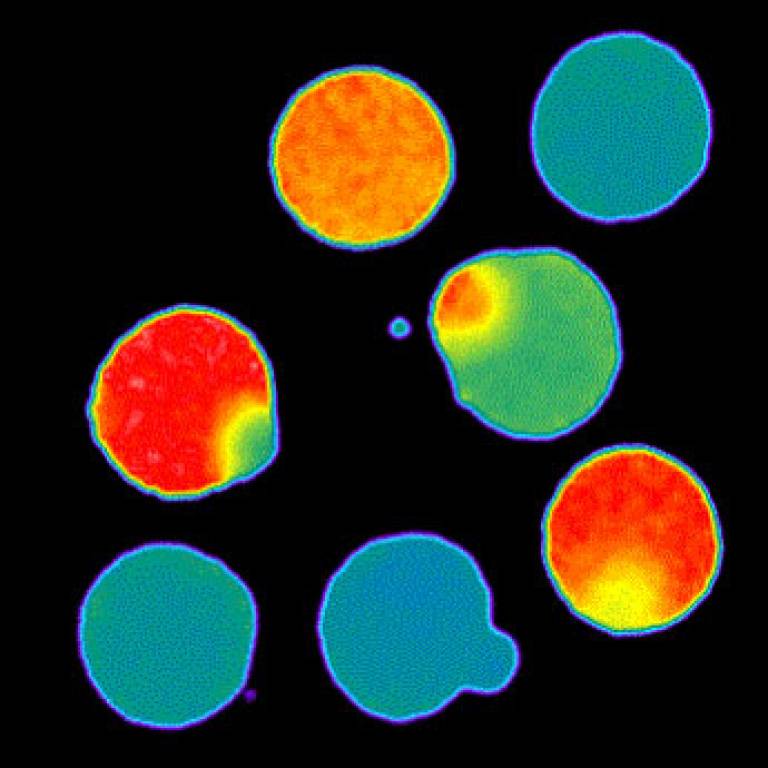Understanding sperm
8 July 2004
UCL scientists have isolated the component in sperm that stimulates eggs for fertilisation.
 The research could help to explain some cases of male factor infertility.
The research could help to explain some cases of male factor infertility.
Dr Karl Swann, Reader in Cell Physiology in UCL's Department of Anatomy & Developmental Biology, worked with his department colleague Dr Mark Larman, Dr John Carroll of UCL's Department of Physiology and collaborators at the University of Wales College of Medicine. The researchers isolated a single soluble sperm factor, known as phospholipase C zeta (PLCzeta), which is responsible for a crucial stage of calcium release within the egg.
In all mammals, the egg must come into contact with a sperm to be activated into a state it can be successfully fertilised. During activation, waves of calcium surge through the egg. These surges have an impact on how the embryo develops and how the egg implants in the womb.
However, in the past scientists did not know which substance in the sperm triggered the calcium surges, explained Dr Swann: "It is still not known exactly how PLCzeta is released from the sperm. However, by finding exactly which substance in sperm activates the egg, we now have the molecular basis of an explanation of how calcium release is triggered during fertilisation."
One in six couples in the UK have difficulty conceiving. The research, published in the science journals 'Reproduction' and 'Journal of Cell Science' may mean that cases where a man's sperm fails to stimulate the egg can now be better understood, said Dr Swann: "The isolation of PLCzeta may for example help to clarify some of the reasons for the high failure rate of ICSI - an in vitro fertilisation technique where a single sperm is injected into the egg."
The researchers thanked those supporting the project, which was made possible by funding from a Wellcome Project Grant and a Strategic Infrastructure Fund Grant from the University of Wales College of Medicine.
Image: Eggs undergoing calcium changes in response to PLCzeta.
To find out more about the research, use the links below.
 Close
Close

